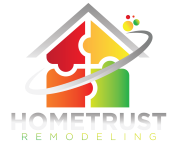 Air Leakage Testing - Maryland Energy Code Compliance
Get Your New Home Maryland Energy Code Tested Today!If you are your own general contractor, you are building a house for the first time or any other reason that you are looking for blower door testing and duct blaster testing then you have come to the right place!
|
Blower Door Testing Want to know more? | Duct Blaster Diagnostics Not Quite Sure Yet? |
IECC Test Benefits Air leakage control in new residential homes is an enormous opportunity that the Department of Energy recognizes as a clear way to improve energy efficiency, comfort and safety. The International Energy Conservation Code (IECC) added air sealing as a key provision to meet. Understanding the guidelines and knowing best practices to achieve results are important to the overall success of your new, energy efficient home. Reducing air leakage can improve summer indoor conditions (less humidity) and winter month energy loss can be greatly reduced with proper air sealing. | Air Leakage Basics Air sealing a house is often times misunderstood. Using caulking and other sealant (foam, weatherstripping) can greatly improve the overall "tightness" of a home and the benefits from taking such actions include:
 Open cell spray foam seals & insulates | Testing Requirements The whole house air leakage test is conducted using a blower door system and the conditions of the home must be set up properly for the test to be considered valid. Proper set-up includes setting interior and exterior doors in the proper position, dampers and other gateways shall be closed, but not sealed beyond their intended infiltration control measures (flap, louver) and all appliances must be in the off position. Having the test run by a certified BPI Building Analyst ensures accurate results. A building analyst is trained to identify air leakage in your home and find the right solutions to fix the issues.  Sealing & insulating ducts greatly improves efficiency |
The Best Way to Pass the Maryland Energy Code Tests
1. Air barrier and thermal barrier.
2. Ceiling/attic
3. Walls
4. Windows, skylight and doors
5. Rim Joists
6. Insulation must be installed and affixed to the underside of the subfloor plywood.
7. Crawl Space Walls
8. Shafts, penetrations
9. Narrow Cavities
10. Garage Separation
11. Recessed Lighting
12. Plumbing and wiring
13. Shower/tub on exterior wall
14. Electrical/phone box on exterior walls
15. HVAC duct measures
16. Fireplace
 Frequently Asked Questions About IECC Maryland Testing
How to Prepare for IECC Blower Door TestingIt is important to make sure the finishing touches are complete around the new house before scheduling blower door or duct blaster testing. If there is missing drywall, gaps in celings or unsealed ductwork it is best to complete all of the finishing work to get the best air leakage result. Are You Building a New House in Maryland?
Read this: FROM the DEPARTMENT OF ENERGY: Sealing the building thermal envelope has been required by the energy code for many years (editions of the IECC). However, in years past the provisions were somewhat vague and only required that areas of potential air leakage such as joints, seams, and utility penetrations be sealed with a durable material such as caulking, gasketing, or weather stripping. The 2009 IECC required verification of air sealing by either a visual inspection against a detailed checklist or a whole-house pressure test. The 2012 IECC NOW requires all new construction and additions be both visually inspected and pressure tested as mandatory requirements. There have been some slight changes to the visual inspection checklist and ratcheting down of the testing parameters, requiring houses to be much tighter than the previous edition of the code (see Figure 2 and Table 1). (Source: DOE - Air Leakage Guide | Building Technologies Program)
The less times this happens, the tighter the home and as a result, the more efficient the home. (please be sure to learn about mechanical ventilation for good indoor air quality). |







 Lower heating bills
Lower heating bills




